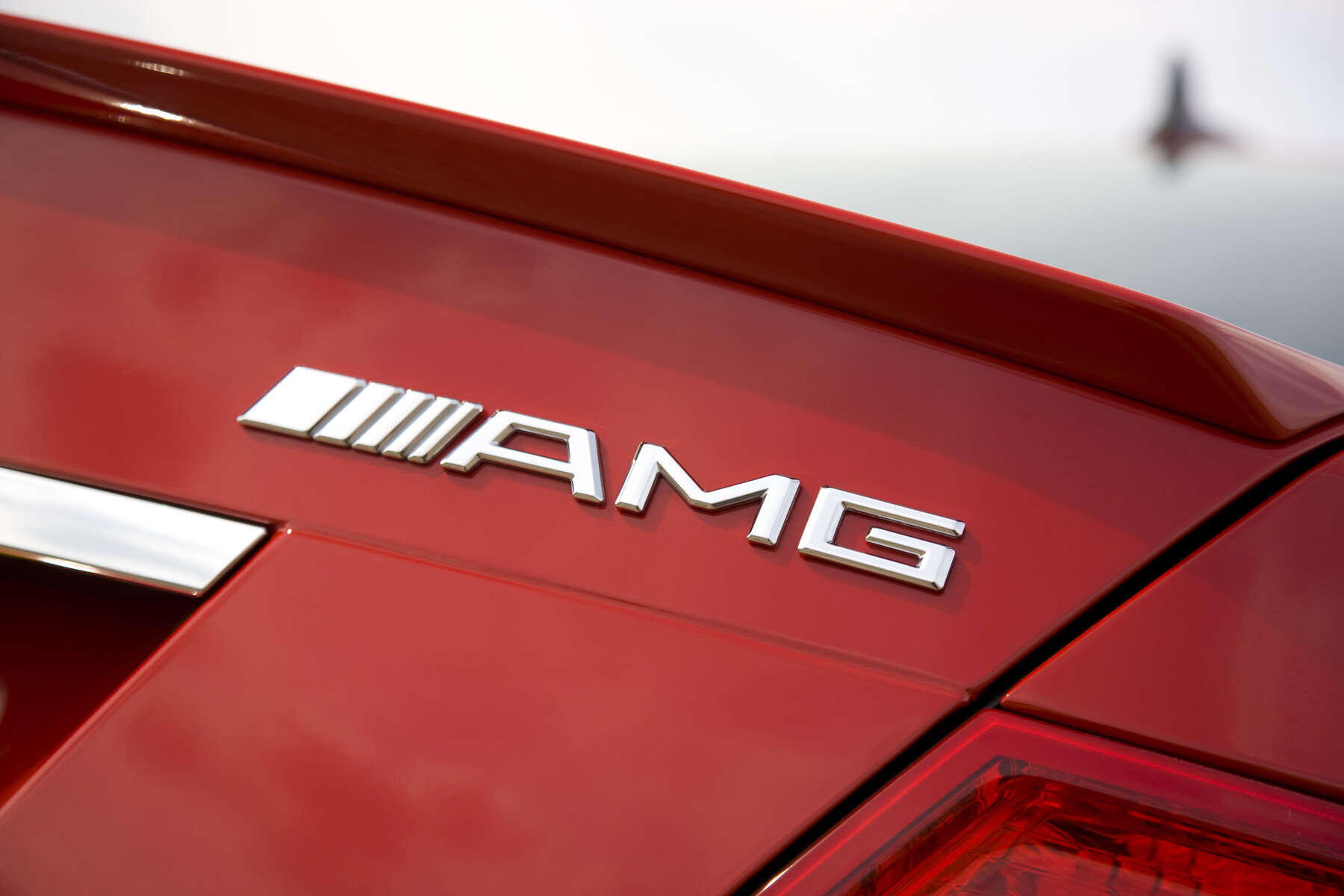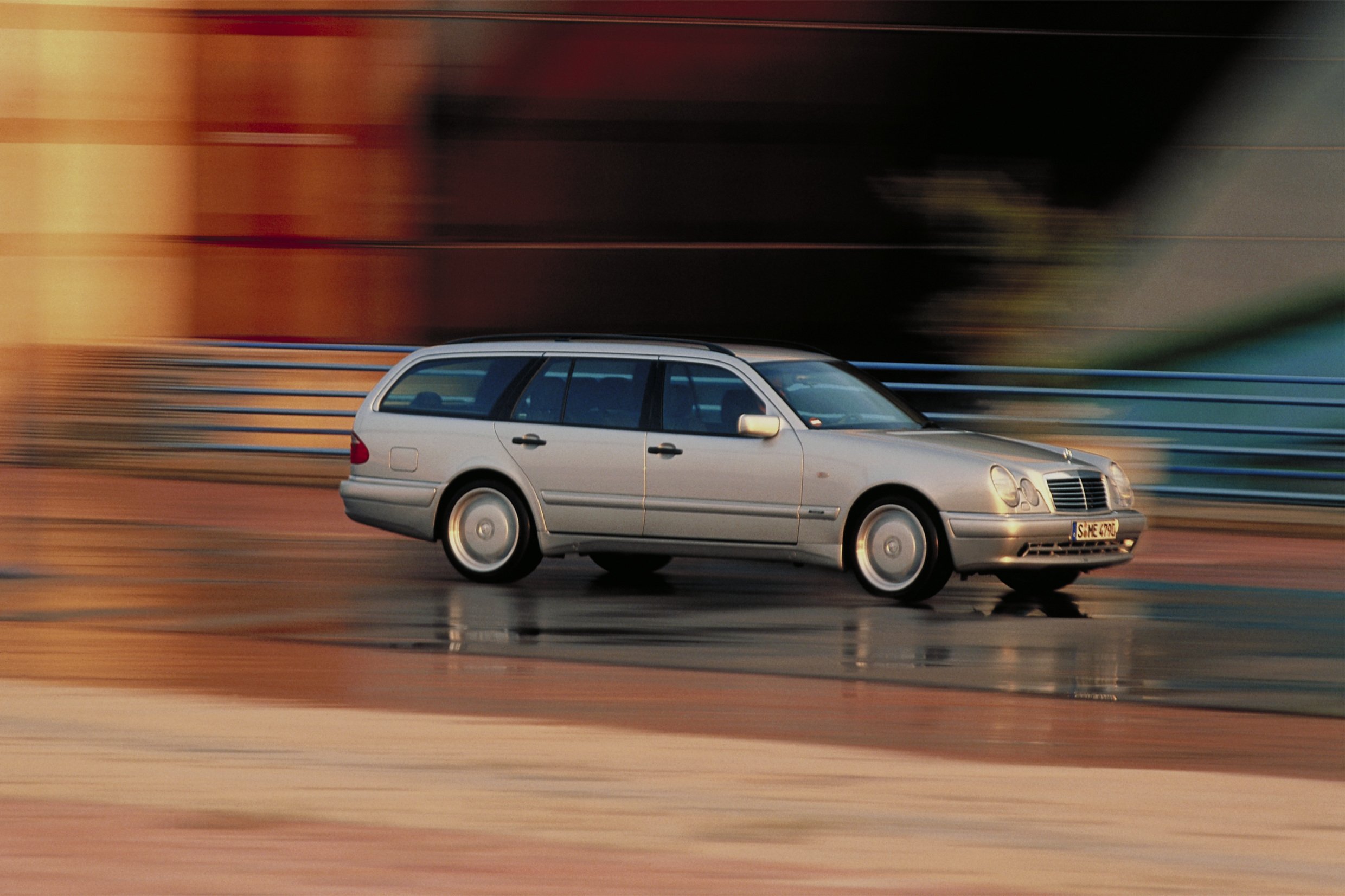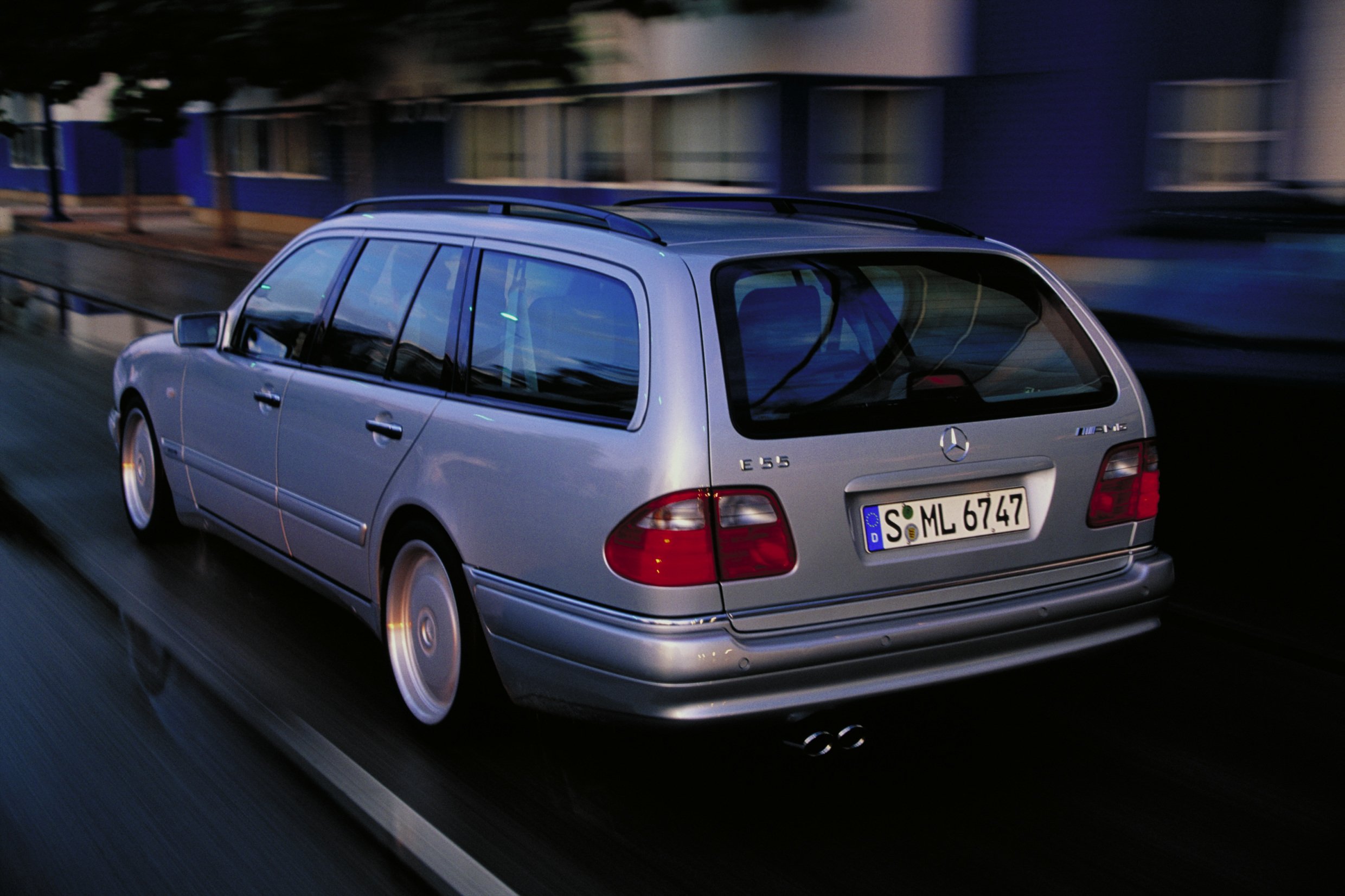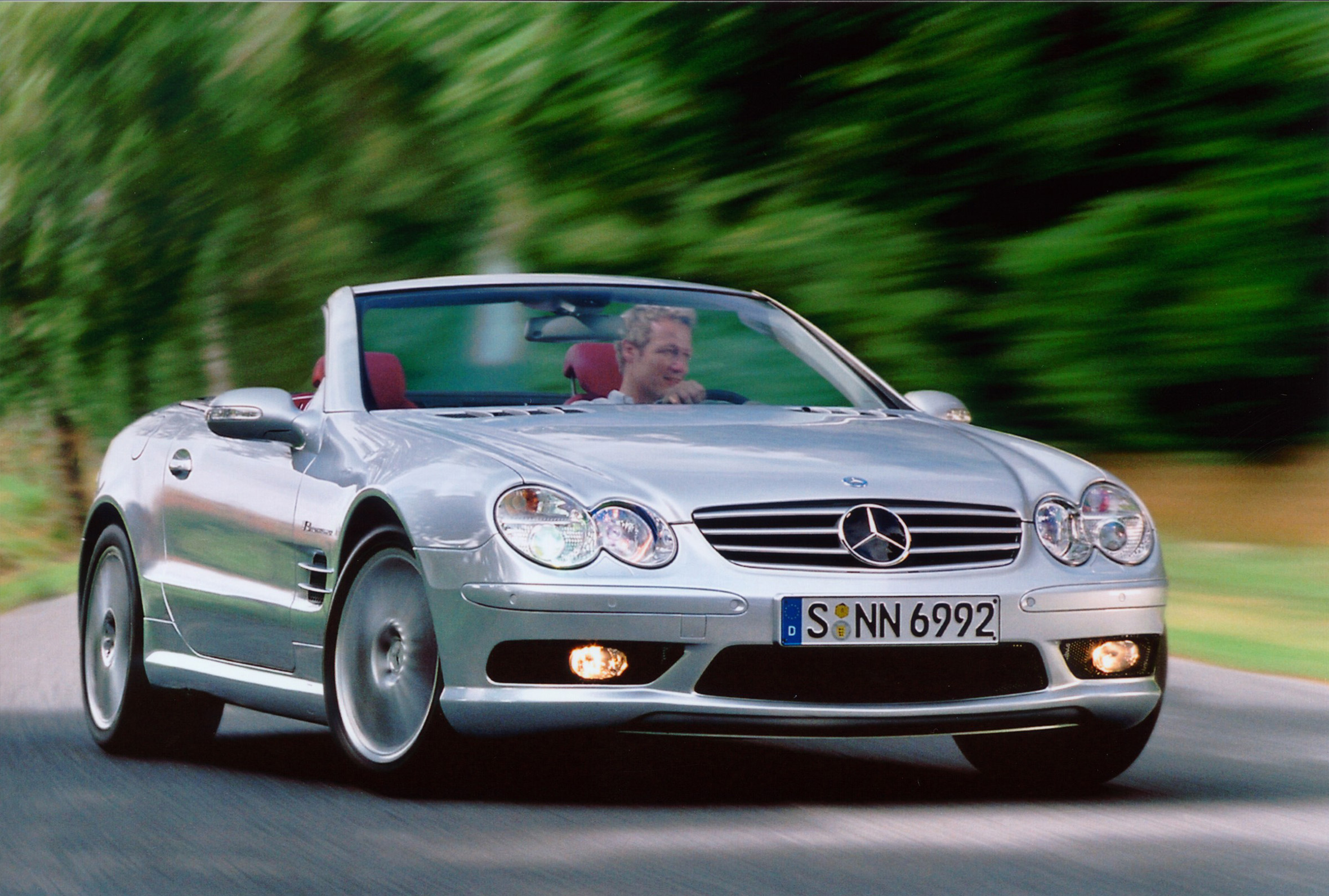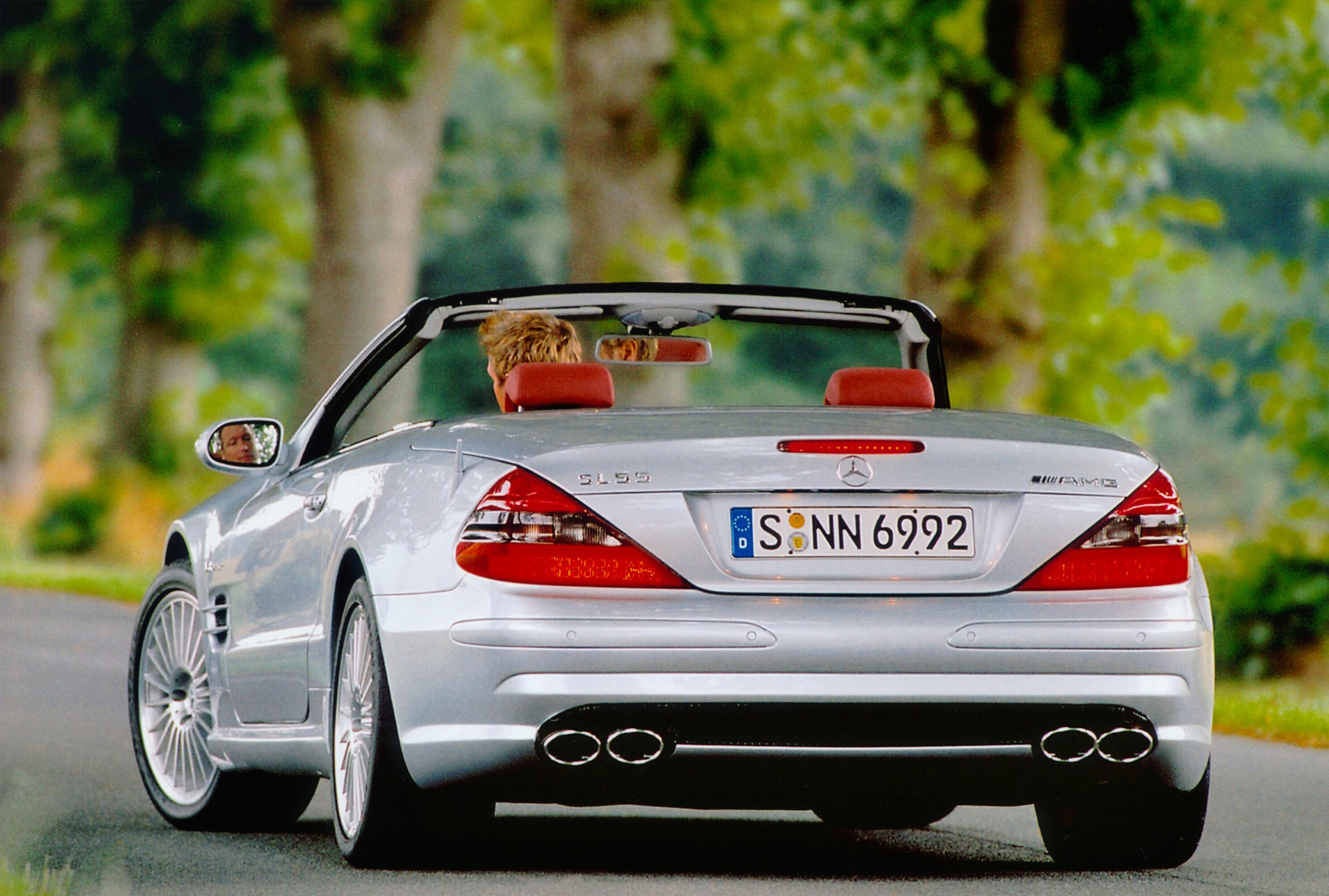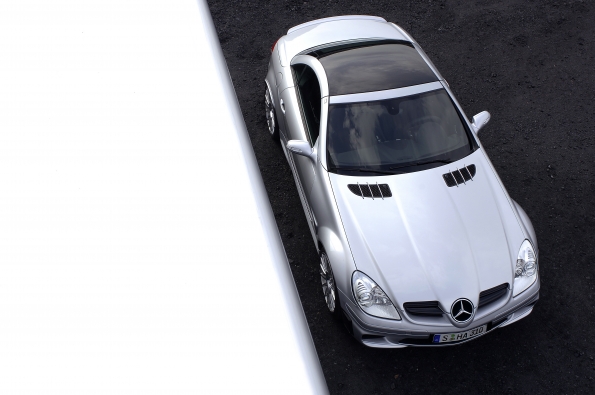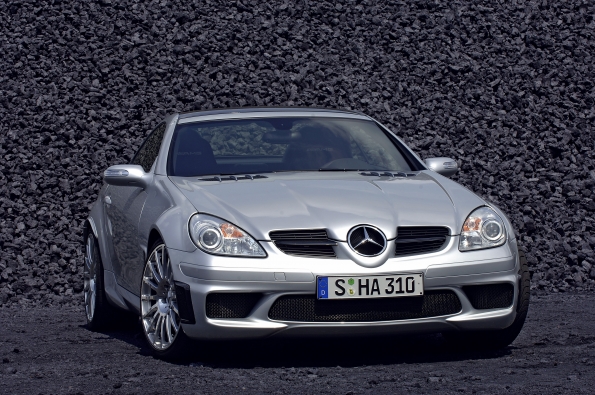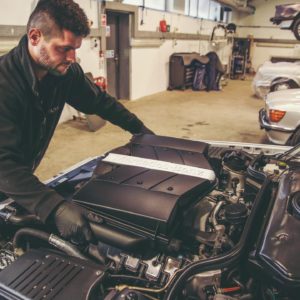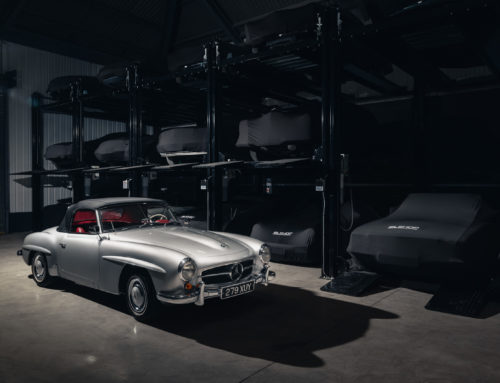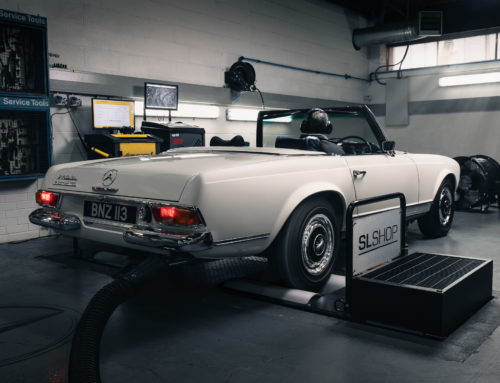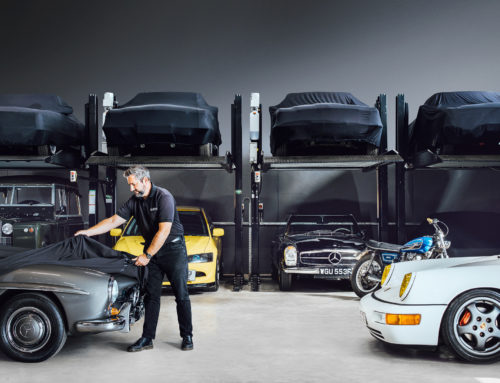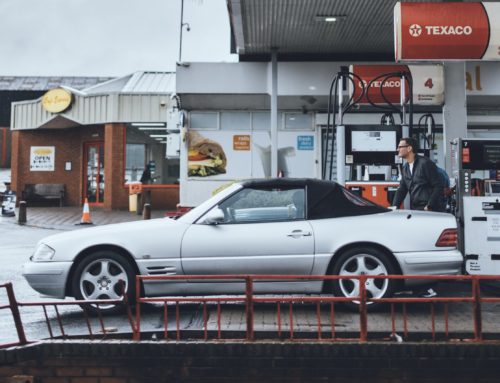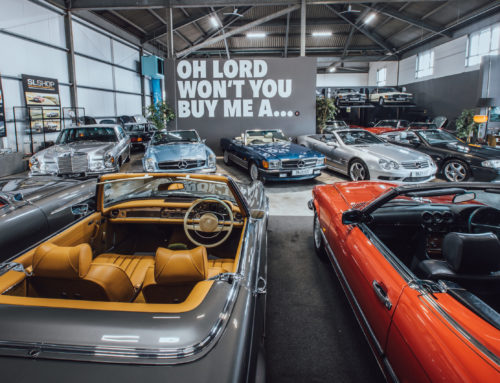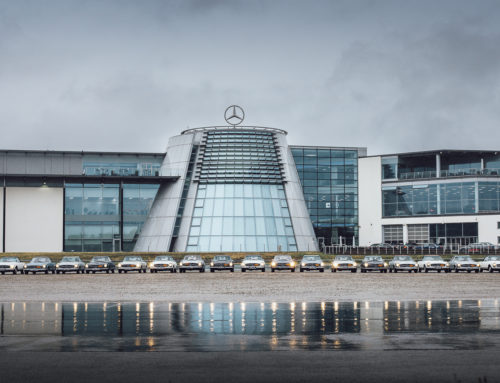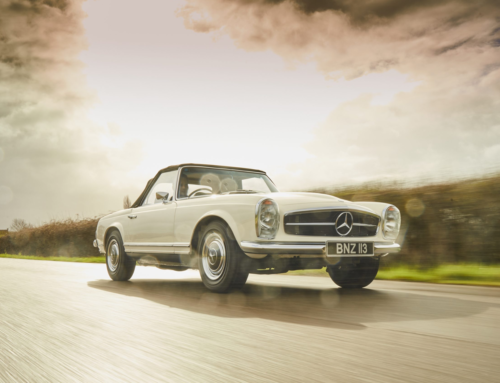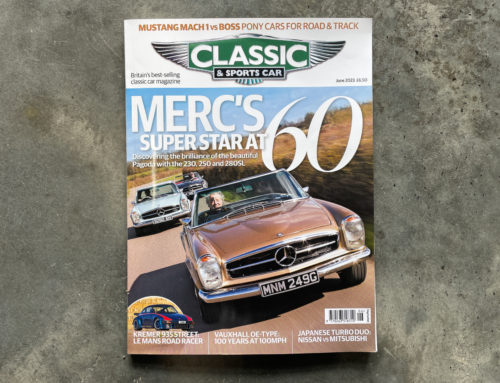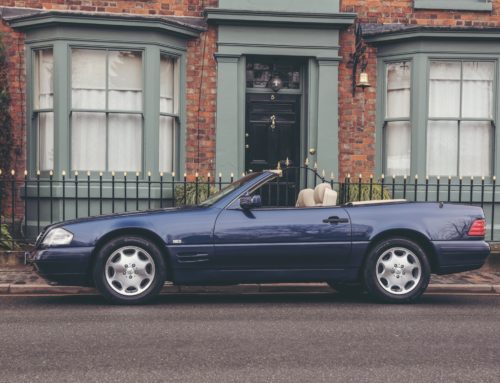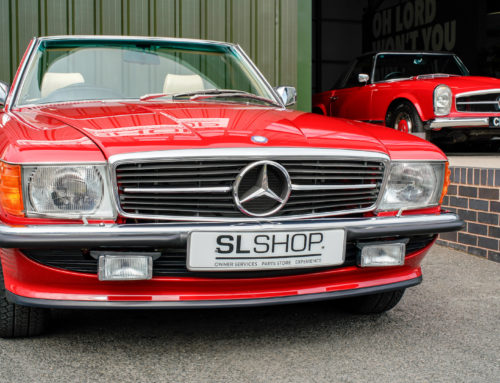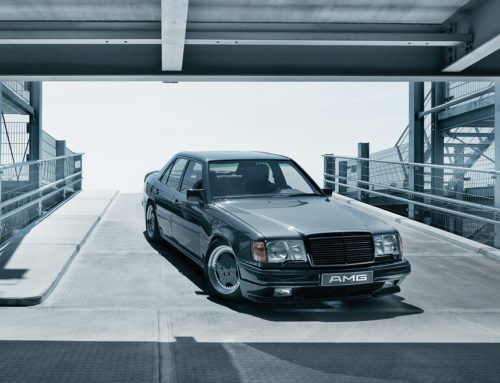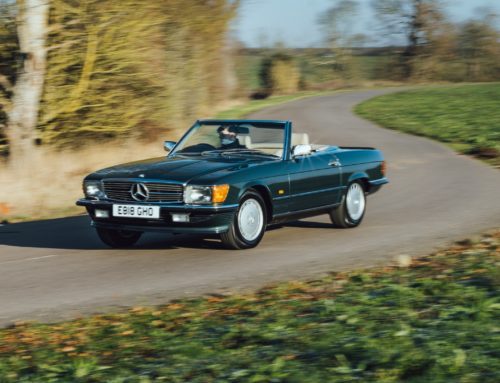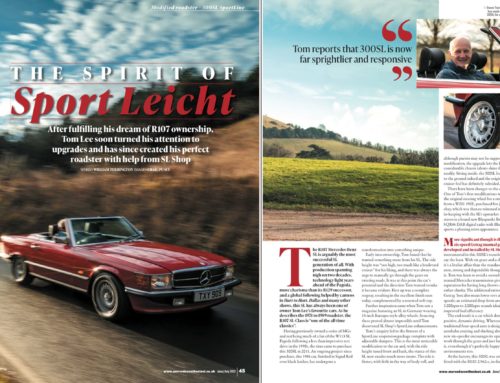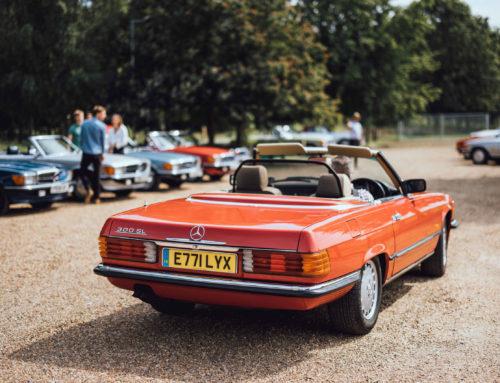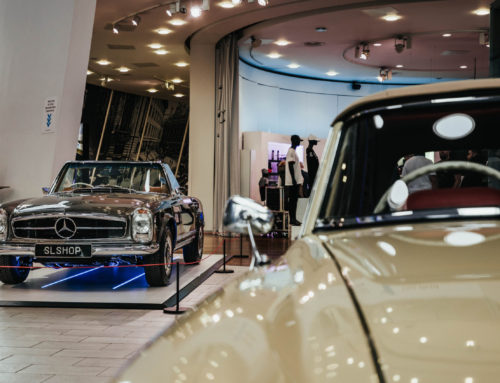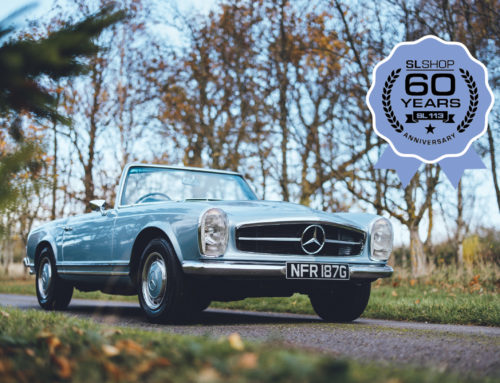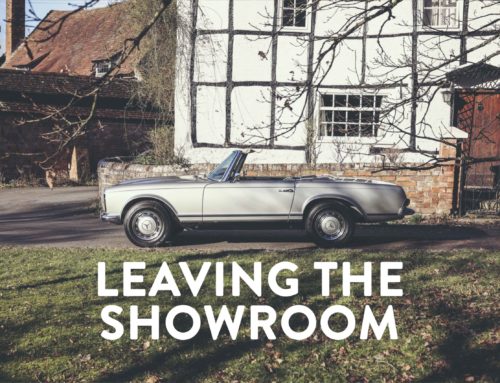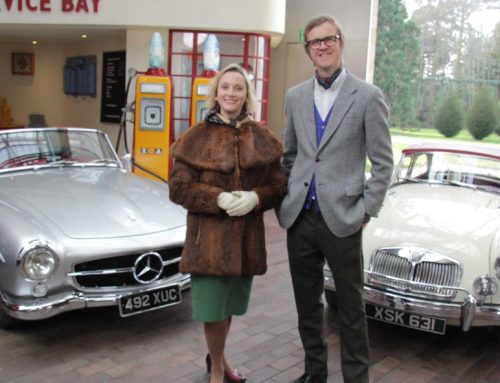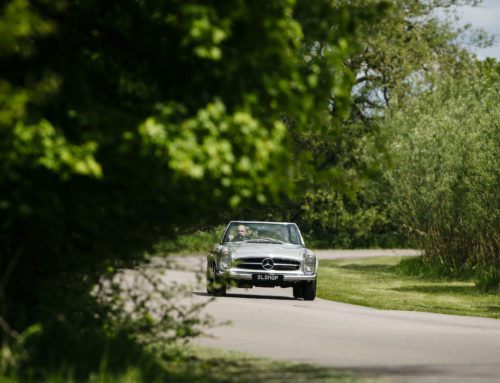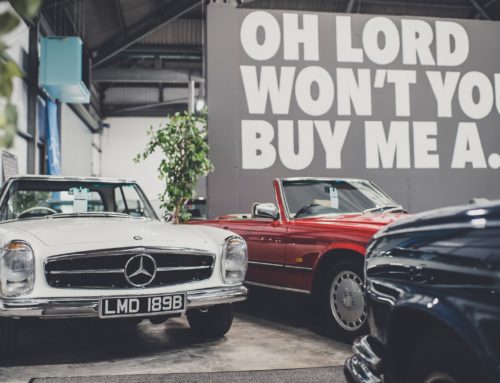Last time we charted AMG’s independent early years, in this article we’ll explore what happened when two became one. AMG’s adoption into the Mercedes-Benz family really raised the stakes and took the firm’s aspiration to the next level. The resulting products were some biblically powerful machines that came to redefine performance motoring in the modern era. The AMG brand has gone on to become a global player on the back of this success, yet its path to glory was laid down in the early Noughties, so that’s where we’ll pick things up…
As the new millennium drew near and we all envisioned the end of life as we know it – remember the millennium bug? – AMG had its head down making new models. With Mercedes-Benz now holding a controlling stake in the firm, it had a greater influence on output, which meant new AMG versions of M-B products would come thick and fast. One of the first to emerge from this new era of integration was an E-Class that carried the soon to be immortal designation E55 AMG.
This first W210 incarnation was more significant than many give it credit for today. It was the first AMG-assembled product, with only bare E-Class shells being delivered to Affalterbach. The assembly involved AMG dropping in the 5.4-litre M113 V8 and bespoke chassis components (mainly bigger brakes and stiffer suspension) but also a new (and slightly garish) interior. Completed E55s were then driven back to Stuttgart for final approval by M-B quality control bods. The resulting luxury barge had a 349bhp V8 monster lurking under its unassuming bonnet. That refinement and understated appeal was what customers had come to expect from an E-Class, even one tuned by AMG.
Very different from the E500 W124 it replaced, nevertheless the E55 found its niche and got AMG noticed. Crucially, it also beat its main rival BMW M5 (E39) into production by nearly a year. Despite this, the first-generation E55 has been largely overlooked by AMG enthusiasts, which is a bit of an anomaly that we think is probably worth exploiting – especially if you have a friendly welder on speed dial.
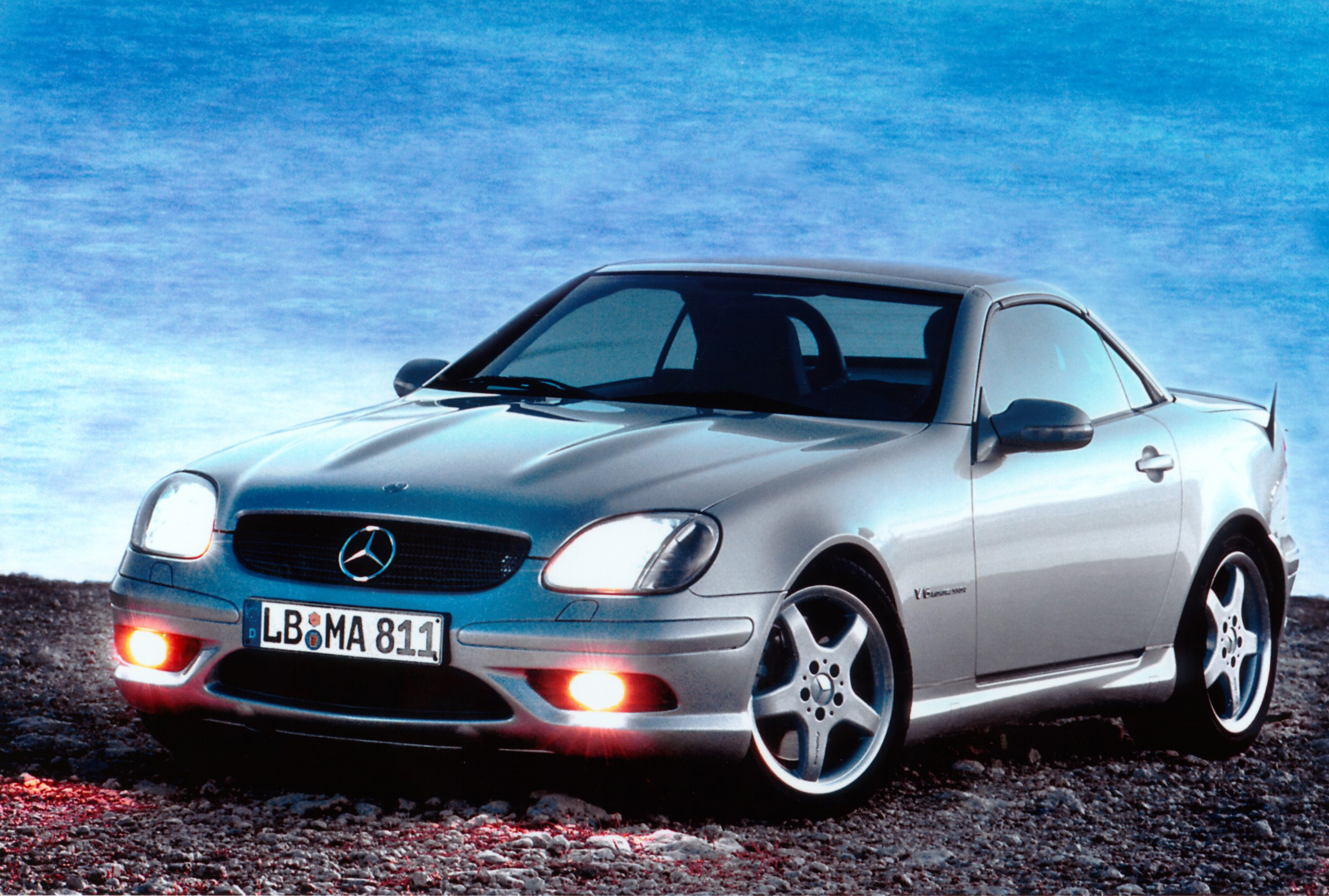
Having thrown down the gauntlet with its E55, AMG deserved some downtime, though new masters M-B were having none of it. The go-faster wizards at Affalterbach were needed to sprinkle some much-needed masculine magic over the SLK. This neat little roadster had been introduced back in 1996 to compete with Porsche’s Boxster and BMW’s Z3. As Europe seemed to be in the grasp of open-top fever, roadsters were soon the must-have automotive fashion accessory. That meant buyers often went for looks and brand image over driving substance. The SLK was one such victim, despite being great to drive.
AMG’s task was to provide a counter point to this slightly soft image and it achieved it by adding a supercharger to the SLK’s new V6 engine. The aforementioned powerplant was added in 2000 to create the wannabe Boxster-S-beating SLK 320. Sadly, the factory M-B offering wasn’t really enough to convince most serious driving fans, but the blown 349bhp SLK32 was. Putting the ‘Sport’ back in the Sport, Leicht, Kurz name (SLK) the AMG SLK32 could demolish the 60mph dash in 4.9 seconds and go on to test the usual 155mph limiter. Very few of those who ever experienced one of the 4333 SLK32s made, ever muttered a hairdresser joke after.
By the middle of the noughties, AMG sales were soaring and Affalterbach needed to expand to keep up with ever-increasing demand. By the turn of the millennium, AMG sales had accounted for 11,500 units, just four years later, that number had risen to an impressive 20,000. With the brand booming, ever more ambitious AMGs started to roar out of Affalterbach’s gates. The R129 SL had helped usher in an era of M-B and AMG collaboration, yet its successor would cement this partnership. The R230 was the first all-new, post-millennial AMG-tuned SL and would be an instant hit.
Up to the 2002 introduction of the SL55 AMG, very few – outside of Mercedes-Benz and AMG circles – really considered Affalterbach as a serious rival to BMW’s M-Power subsidiary in Garching. On the racetrack it was a different story, but road cars baring the AMG badge (immediately post-merger) were little more than production Mercs with monster engines. The SL55 really reset those assumptions. Its engine was of course a masterpiece, but it also had the chassis to back it up. Boasting a supercharged 5.4-litre, 493bhp V8 and a derestricted top speed said to be in excess of 200mph, this SL was good enough to not only worry BMW, it also scared the hell out of Porsche. Yes, we know the early cars broke a lot, but most of these issues were quickly cured and they rarely (if ever) involved the AMG bits.But even performance that nudged into supercar territory wasn’t deemed enough for AMG in its golden era. The firm went back to its routes in 2006 by offering a more tailored solution to going fast, with the AMG Performance Studio. The firm was built on customisation and yet, by the mid-noughties Affalterbach had largely forgotten. The Performance Studio allowed for a greater level of customer err, customisation. Aside from the awful, flashy and over-priced nonsense this allowed certain people with more money than taste to create, the Performance Studio also undertook a new line of super limited-edition AMG models.
TURN TO THE DARK SIDE
The ‘Black Series’ moniker first appeared in 2006 when it was slapped on the rump of a heavily revised SLK Tracksport. There was no mistaking this SLK for a boulevard cruiser, even if you weren’t looking too closely, you’d still have trouble missing its enormous flared carbonfibre front wings, entirely new aero, lightweight wheels and carbonfibre roof. All installed in a quest to save weight. The diet continued in the cabin with one-piece bucket seats and carbon door cards.
All this racing addenda wasn’t just for show either, this Black Series SLK grew out of 35 specially modified racing SLKs, intended for an Asian race series that ultimately never happened. The work wasn’t wasted as the proposed road-going versions of these Asian racers evolved into the SLK Black Series. It was timely too, as BMW was wowing the world with its race-inspired M3 CSL. Pressure from Munich no doubt contributed to M-B granting this bonkers SLK the greenlight for a limited production run of just 100.
The SLK Black Series showed that there was an appetite for even more focussed AMG products. Two years after the SLK emerged, attendees of Monterrey Car Week were treated to a shadowy new SL also baring the Black Series badge. Few would have thought that a stock SL65 AMG was lacking in presence or power but they soon thought differently upon being greeted by the Black version. The weight saving in this instance was taken much further than it had been on the SLK – though admittedly the SL had a lot more to lose. An astonishing 250kg was tore out, largely achieved again by extensive use of carbonfibre panels plus a fixed roof.
The V12 engine’s power was also up by around 10% to a mammoth 670bhp and a scarcely believable 737lb ft of torque. The gap closed significantly between power and weight giving the SL65 AMG Black Series a 60mph dash of just 3.9 seconds. Even with an electronic limiter, it would power through to a top speed of 199mph. Supercar performance came with a similarly stellar price tag of £250,000 in 2008, yet they haven’t depreciated at all… In fact, they’ve gone the other way, now costing nearer to £275k.
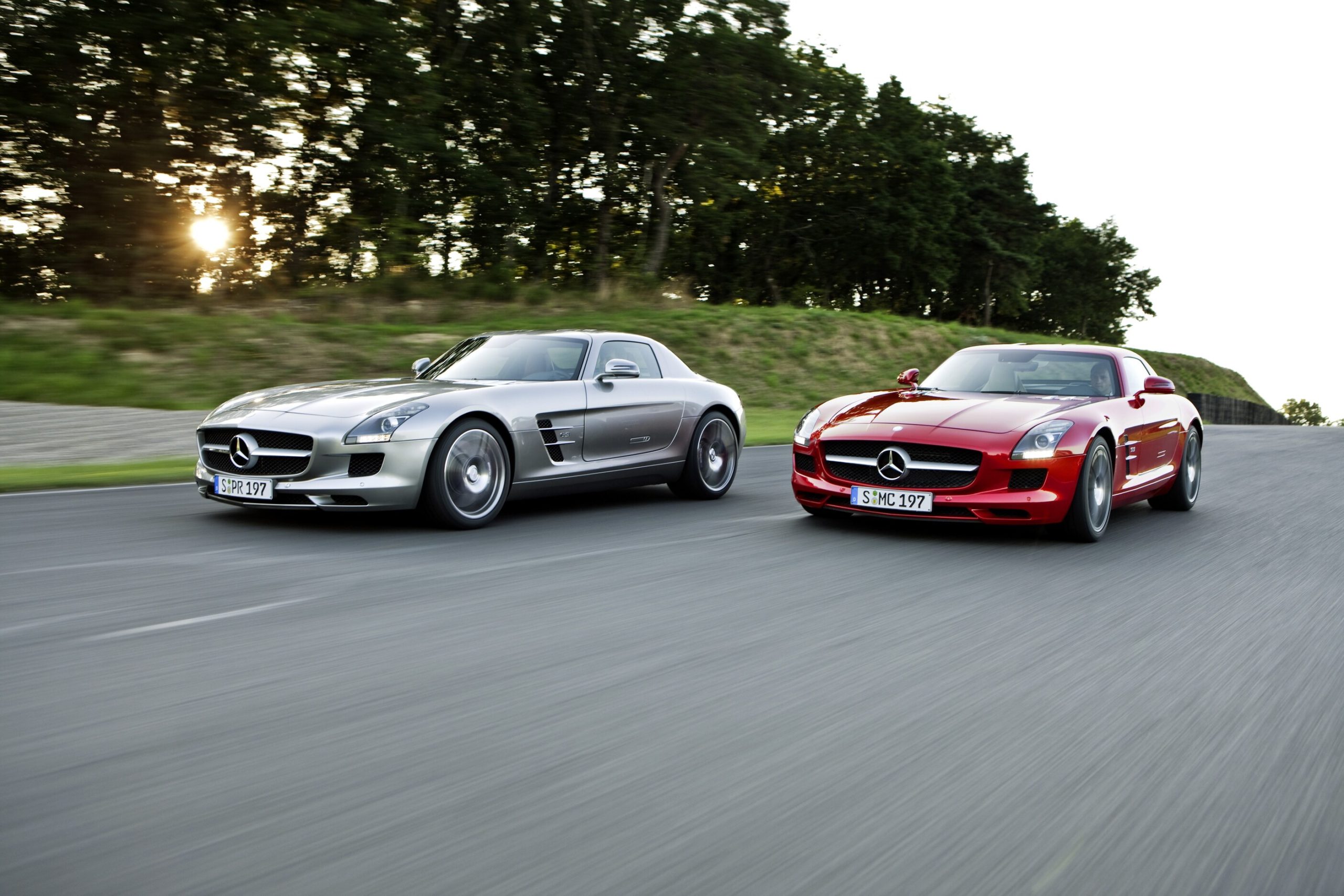
TRUE SUPERCARS
Not content with making SLs that could nearly crack the double ton, AMG ambition reached its zenith in 2009 when the firm revealed its first ever ground-up road car design at the Frankfurt Motor Show. A spiritual successor to the 300SL, and a logical progression from the McLaren-Mercedes SLR, the new SLS (Super Leicht Sport) had taken just over three years to go from the drawing board to the showroom.
Even before it was revealed, the car’s production was certainly unconventional, which is something of an AMG hallmark. To test its running gear, and have built-in flexibility to quickly adjust things as needed, AMG engineers bought 14 Dodge Viper GTSs as test mules. The space frame American sports car was ideally suited and with SLS running gear fitted these ‘T-cars’ – as AMG christened them – were duly hurled around the Nürburgring to gather data. AMG became Europe’s chief Viper customer in the process, not that anyone at Chrysler caught on…
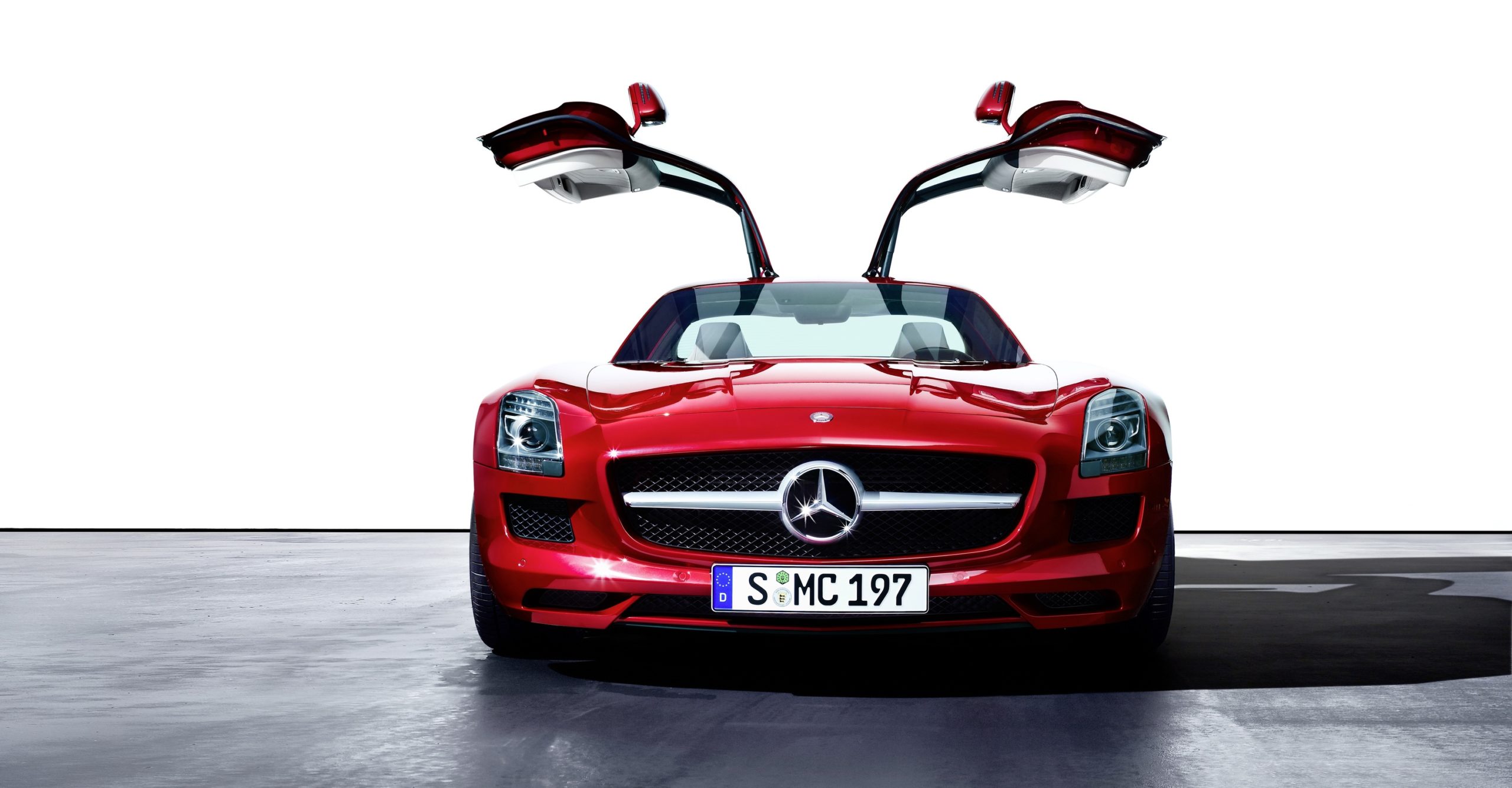
The heart of the SLS was a heavily modified version of AMG’s M156 V8 engine. In fact, so many parts needed to be swapped (120 ish) that the SLS engine gained an entirely new designation, M159. When it went on sale, this 563bhp motor was claimed (by AMG engineers) to be the world’s most powerful naturally aspirated production engine. It was placed far back enough in the engine bay to class the SLS as front mid-engined too. Chassis balance was exceptional and weight was surprisingly low at just over 1600kgs. Performance was therefore rampant, with 60mph surpassed in 3.6 seconds and just 30 seconds later, you’d be passing the 200mph mark. Just like innumerable supercars and hyper cars before and since, the SLS featured gull wing doors, which was effectively the only thing it had in common with its 1950s progenitor.
Production of the SLS ended in 2014 after 2734 coupes and roadsters had been built. This milestone marks the final chapter in AMG’s ascension to a maker in its own right. The firm started out taking on any odd job a customer with a Mercedes-Benz wanted sorting and ended up building one of the world’s fastest and most coveted supercars. That’s quite the transformation, though I don’t think even achieving this lofty goal marks the outer limit of AMG’s ambition…
SLSHOP AMG WORKSHOPS
Share With Your Fellow Enthusiasts
Last time we charted AMG’s independent early years, in this article we’ll explore what happened when two became one. AMG’s adoption into the Mercedes-Benz family really raised the stakes and took the firm’s aspiration to the next level. The resulting products were some biblically powerful machines that came to redefine performance motoring in the modern era. The AMG brand has gone on to become a global player on the back of this success, yet its path to glory was laid down in the early Noughties, so that’s where we’ll pick things up…
As the new millennium drew near and we all envisioned the end of life as we know it – remember the millennium bug? – AMG had its head down making new models. With Mercedes-Benz now holding a controlling stake in the firm, it had a greater influence on output, which meant new AMG versions of M-B products would come thick and fast. One of the first to emerge from this new era of integration was an E-Class that carried the soon to be immortal designation E55 AMG.
This first W210 incarnation was more significant than many give it credit for today. It was the first AMG-assembled product, with only bare E-Class shells being delivered to Affalterbach. The assembly involved AMG dropping in the 5.4-litre M113 V8 and bespoke chassis components (mainly bigger brakes and stiffer suspension) but also a new (and slightly garish) interior. Completed E55s were then driven back to Stuttgart for final approval by M-B quality control bods. The resulting luxury barge had a 349bhp V8 monster lurking under its unassuming bonnet. That refinement and understated appeal was what customers had come to expect from an E-Class, even one tuned by AMG.
Very different from the E500 W124 it replaced, nevertheless the E55 found its niche and got AMG noticed. Crucially, it also beat its main rival BMW M5 (E39) into production by nearly a year. Despite this, the first-generation E55 has been largely overlooked by AMG enthusiasts, which is a bit of an anomaly that we think is probably worth exploiting – especially if you have a friendly welder on speed dial.

Having thrown down the gauntlet with its E55, AMG deserved some downtime, though new masters M-B were having none of it. The go-faster wizards at Affalterbach were needed to sprinkle some much-needed masculine magic over the SLK. This neat little roadster had been introduced back in 1996 to compete with Porsche’s Boxster and BMW’s Z3. As Europe seemed to be in the grasp of open-top fever, roadsters were soon the must-have automotive fashion accessory. That meant buyers often went for looks and brand image over driving substance. The SLK was one such victim, despite being great to drive.
AMG’s task was to provide a counter point to this slightly soft image and it achieved it by adding a supercharger to the SLK’s new V6 engine. The aforementioned powerplant was added in 2000 to create the wannabe Boxster-S-beating SLK 320. Sadly, the factory M-B offering wasn’t really enough to convince most serious driving fans, but the blown 349bhp SLK32 was. Putting the ‘Sport’ back in the Sport, Leicht, Kurz name (SLK) the AMG SLK32 could demolish the 60mph dash in 4.9 seconds and go on to test the usual 155mph limiter. Very few of those who ever experienced one of the 4333 SLK32s made, ever muttered a hairdresser joke after.
By the middle of the noughties, AMG sales were soaring and Affalterbach needed to expand to keep up with ever-increasing demand. By the turn of the millennium, AMG sales had accounted for 11,500 units, just four years later, that number had risen to an impressive 20,000. With the brand booming, ever more ambitious AMGs started to roar out of Affalterbach’s gates. The R129 SL had helped usher in an era of M-B and AMG collaboration, yet its successor would cement this partnership. The R230 was the first all-new, post-millennial AMG-tuned SL and would be an instant hit.
Up to the 2002 introduction of the SL55 AMG, very few – outside of Mercedes-Benz and AMG circles – really considered Affalterbach as a serious rival to BMW’s M-Power subsidiary in Garching. On the racetrack it was a different story, but road cars baring the AMG badge (immediately post-merger) were little more than production Mercs with monster engines. The SL55 really reset those assumptions. Its engine was of course a masterpiece, but it also had the chassis to back it up. Boasting a supercharged 5.4-litre, 493bhp V8 and a derestricted top speed said to be in excess of 200mph, this SL was good enough to not only worry BMW, it also scared the hell out of Porsche. Yes, we know the early cars broke a lot, but most of these issues were quickly cured and they rarely (if ever) involved the AMG bits.But even performance that nudged into supercar territory wasn’t deemed enough for AMG in its golden era. The firm went back to its routes in 2006 by offering a more tailored solution to going fast, with the AMG Performance Studio. The firm was built on customisation and yet, by the mid-noughties Affalterbach had largely forgotten. The Performance Studio allowed for a greater level of customer err, customisation. Aside from the awful, flashy and over-priced nonsense this allowed certain people with more money than taste to create, the Performance Studio also undertook a new line of super limited-edition AMG models.
TURN TO THE DARK SIDE
The ‘Black Series’ moniker first appeared in 2006 when it was slapped on the rump of a heavily revised SLK Tracksport. There was no mistaking this SLK for a boulevard cruiser, even if you weren’t looking too closely, you’d still have trouble missing its enormous flared carbonfibre front wings, entirely new aero, lightweight wheels and carbonfibre roof. All installed in a quest to save weight. The diet continued in the cabin with one-piece bucket seats and carbon door cards.
All this racing addenda wasn’t just for show either, this Black Series SLK grew out of 35 specially modified racing SLKs, intended for an Asian race series that ultimately never happened. The work wasn’t wasted as the proposed road-going versions of these Asian racers evolved into the SLK Black Series. It was timely too, as BMW was wowing the world with its race-inspired M3 CSL. Pressure from Munich no doubt contributed to M-B granting this bonkers SLK the greenlight for a limited production run of just 100.
The SLK Black Series showed that there was an appetite for even more focussed AMG products. Two years after the SLK emerged, attendees of Monterrey Car Week were treated to a shadowy new SL also baring the Black Series badge. Few would have thought that a stock SL65 AMG was lacking in presence or power but they soon thought differently upon being greeted by the Black version. The weight saving in this instance was taken much further than it had been on the SLK – though admittedly the SL had a lot more to lose. An astonishing 250kg was tore out, largely achieved again by extensive use of carbonfibre panels plus a fixed roof.
The V12 engine’s power was also up by around 10% to a mammoth 670bhp and a scarcely believable 737lb ft of torque. The gap closed significantly between power and weight giving the SL65 AMG Black Series a 60mph dash of just 3.9 seconds. Even with an electronic limiter, it would power through to a top speed of 199mph. Supercar performance came with a similarly stellar price tag of £250,000 in 2008, yet they haven’t depreciated at all… In fact, they’ve gone the other way, now costing nearer to £275k.

TRUE SUPERCARS
Not content with making SLs that could nearly crack the double ton, AMG ambition reached its zenith in 2009 when the firm revealed its first ever ground-up road car design at the Frankfurt Motor Show. A spiritual successor to the 300SL, and a logical progression from the McLaren-Mercedes SLR, the new SLS (Super Leicht Sport) had taken just over three years to go from the drawing board to the showroom.
Even before it was revealed, the car’s production was certainly unconventional, which is something of an AMG hallmark. To test its running gear, and have built-in flexibility to quickly adjust things as needed, AMG engineers bought 14 Dodge Viper GTSs as test mules. The space frame American sports car was ideally suited and with SLS running gear fitted these ‘T-cars’ – as AMG christened them – were duly hurled around the Nürburgring to gather data. AMG became Europe’s chief Viper customer in the process, not that anyone at Chrysler caught on…

The heart of the SLS was a heavily modified version of AMG’s M156 V8 engine. In fact, so many parts needed to be swapped (120 ish) that the SLS engine gained an entirely new designation, M159. When it went on sale, this 563bhp motor was claimed (by AMG engineers) to be the world’s most powerful naturally aspirated production engine. It was placed far back enough in the engine bay to class the SLS as front mid-engined too. Chassis balance was exceptional and weight was surprisingly low at just over 1600kgs. Performance was therefore rampant, with 60mph surpassed in 3.6 seconds and just 30 seconds later, you’d be passing the 200mph mark. Just like innumerable supercars and hyper cars before and since, the SLS featured gull wing doors, which was effectively the only thing it had in common with its 1950s progenitor.
Production of the SLS ended in 2014 after 2734 coupes and roadsters had been built. This milestone marks the final chapter in AMG’s ascension to a maker in its own right. The firm started out taking on any odd job a customer with a Mercedes-Benz wanted sorting and ended up building one of the world’s fastest and most coveted supercars. That’s quite the transformation, though I don’t think even achieving this lofty goal marks the outer limit of AMG’s ambition…
SLSHOP AMG WORKSHOPS
Share With Your Fellow Enthusiasts
More from Journal
CARE
THE ULTIMATE CERTIFIED SERVICING INVESTMENT PLAN
Your ownership journey matters to us, which is why we have created a simple certified servicing investment plan, tailored to your individual needs and aspirations.
Start investing today and our dedicated CARE team will work with you to increase the value and enjoyment you receive from your vehicle.

STAY IN TUNE WITH SLSHOP MOMENTS
As part of SLSHOP’s community of enthusiasts, you’ll be the first to hear about events and tours, key product offers, exciting stories from owners around the world and of course… our latest additions to the showroom. So, be the first to know and you might just sneak a car on your driveway or take your car’s condition to new heights with our exclusive replacement parts.
Or, visit SLSHOP Journal
